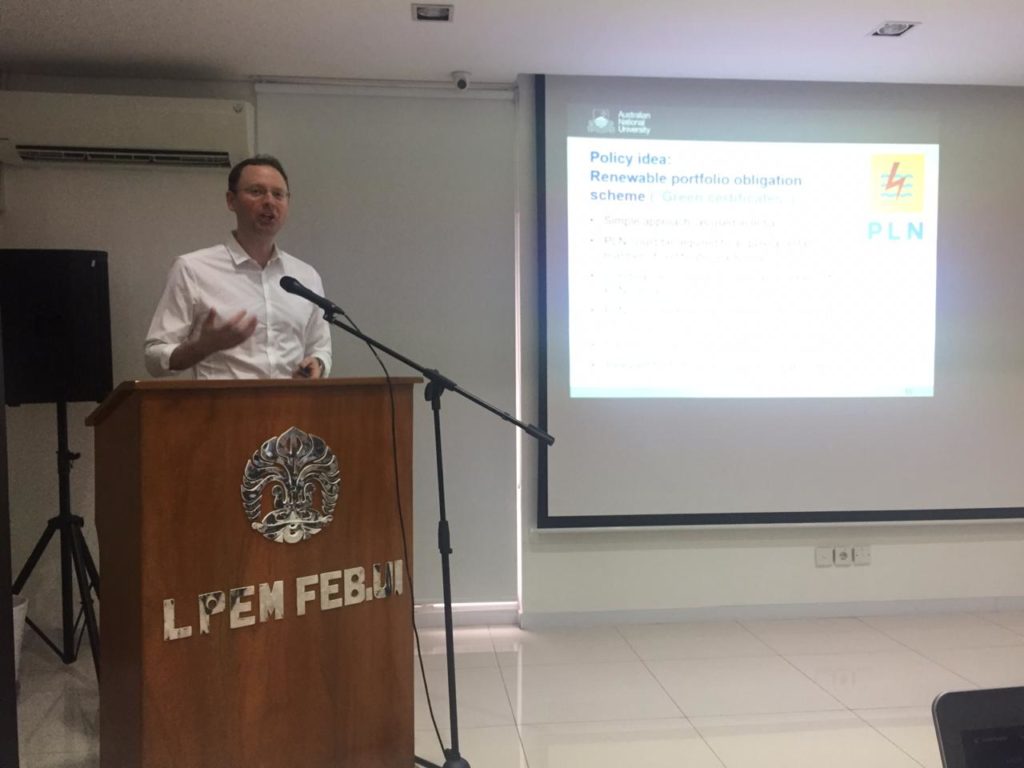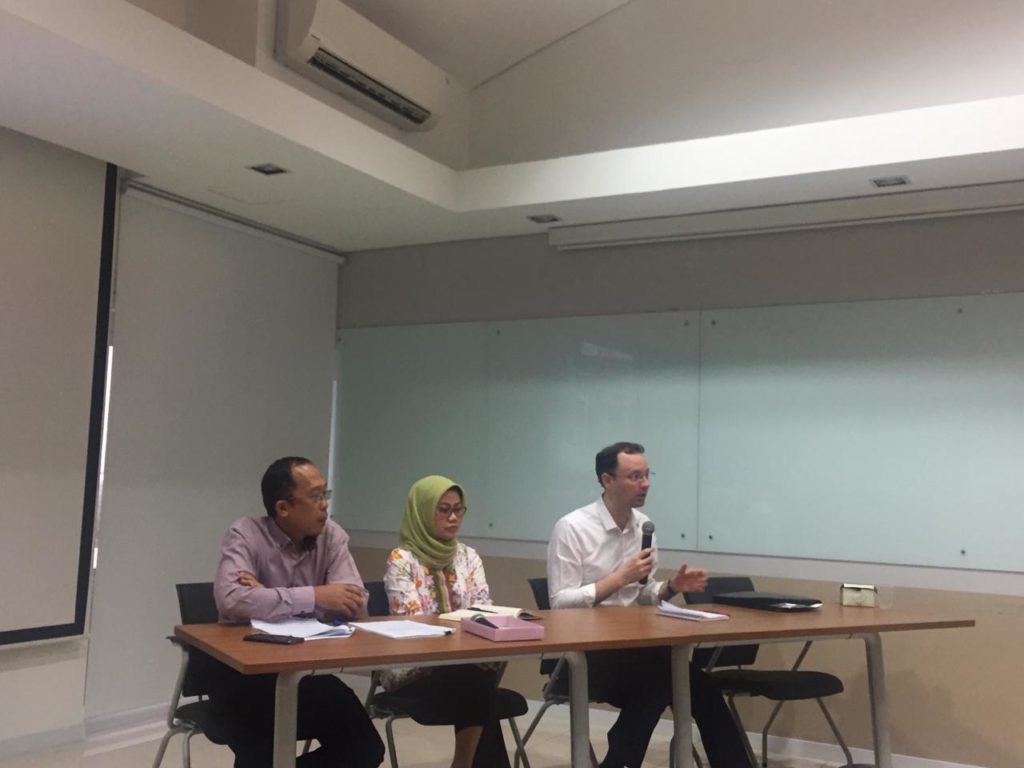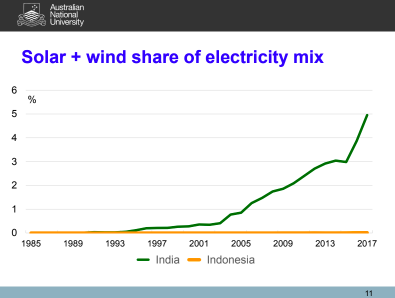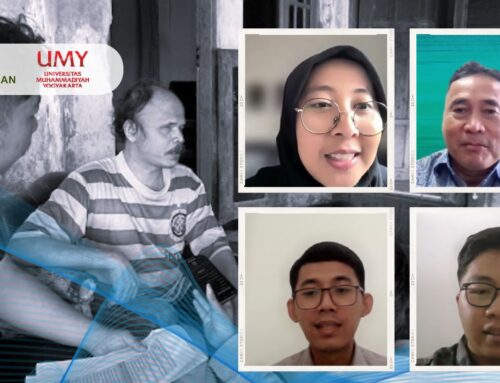 In recent years, efforts to withdraw fossil fuels have risen and countries are trying to increase the share of alternative energy sources such as solar and wind into the energy mix. In regards to this phenomenon, Paul Burke (The Australian National University) presented his research entitled “Overcoming barriers to solar and wind energy in Indonesia” on Tuesday, 22 January 2019, at LPEM FEB UI, Salemba. More than 60 people attended the discussion, including former Director of PLN Mr Nur Pamudji; government officials, NGO activists, staffs of energy companies, and academics.
In recent years, efforts to withdraw fossil fuels have risen and countries are trying to increase the share of alternative energy sources such as solar and wind into the energy mix. In regards to this phenomenon, Paul Burke (The Australian National University) presented his research entitled “Overcoming barriers to solar and wind energy in Indonesia” on Tuesday, 22 January 2019, at LPEM FEB UI, Salemba. More than 60 people attended the discussion, including former Director of PLN Mr Nur Pamudji; government officials, NGO activists, staffs of energy companies, and academics.
Previously, many believe that solar and wind energy are too expensive, but the narrative has changed very quickly; Paul Burke asserted that solar and wind are outcompeting the costs of other energy sources due to economies of scale. In the case of Indonesia, the government aims that 23% per cent of the nation’s energy mix should come from renewable and new energy sources, generating 8.3 GW of solar and wind energy by 2025. This target is deemed ambitious, as the country currently only generates less than 0.1 GW. How can Indonesia achieve this target?
Paul Burke looked to the case of India as a comparison to Indonesia. Both India and Indonesia still currently rely on coal, but India has stronger research capacity and a more decentralized energy system (as opposed to Indonesia’s centralized PLN). As a result, the share of solar and wind energy in the electricity mix in India has increased rapidly in the past few years, reaching around 5% (51 GW) in 2017 (mostly from wind energy), whereas Indonesia has been stagnant at around 0.1GW. The key to India’s success lies in the strong initiative and facilitation by the governments. India has also established large-scale reverse auctions for power purchasing agreements (PPAs) and de-risked the mechanism through solar parks, transmission connections, and improving payment security. These efforts have successfully cut the prices for solar and wind in India. Meanwhile, Indonesia faces some policy issues, which include domestic content requirements, regulatory uncertainties, and licensing issues. Burke posed the idea of adopting India’s large-scale reverse auction and solar parks as well as other ideas such as renewable portfolio obligation schemes, further energy subsidy reforms, and the establishment of Indonesian Clean Energy Agency.
 As one of the discussants, Harris Yahya (Director for Various New and Renewable Energy, Ministry for Energy and Mineral Resources) gave further insights on the issues faced by the government in the uptake of solar and wind energy, especially regarding land ownership and local content. Harris Yahya also pointed the government’s achievements and their effort to improve current regulations.
As one of the discussants, Harris Yahya (Director for Various New and Renewable Energy, Ministry for Energy and Mineral Resources) gave further insights on the issues faced by the government in the uptake of solar and wind energy, especially regarding land ownership and local content. Harris Yahya also pointed the government’s achievements and their effort to improve current regulations.
Finally, the next discussant, Ascopias Rachmi Indriyanto (Senior Advisor, Energy Policy and Regulatory Affairs, USAID Indonesia Clean Energy Development Project) pointed out how Burke’s recommendation assumed that the existing condition in Indonesia and India are the same, even though a key point in India’s success is the government’s initiative, which Indonesia still lacks. She also emphasized the importance of capacity building in making the negotiation process of projects smoother.
For the complete presentation and Q&A session, please refer to the video and materials provided.





